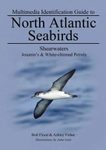![The Double-Crested Cormorant The Double-Crested Cormorant]()
Click to have a closer look
About this book
Contents
Customer reviews
Biography
Related titles
About this book
Please note: not to be confused with the 2012 book by Dennis Wild with the same title.
The double-crested cormorant, found only in North America, is an iridescent black waterbird superbly adapted to catch fish. It belongs to a family of birds vilified since biblical times and persecuted around the world. Thus it was perhaps to be expected that the first Europeans settlers in North America quickly deemed the double-crested cormorant a competitor for fishing stock and undertook a relentless drive to destroy the birds. This enormously important book explores the roots of human-cormorant conflicts, dispels myths about the birds, and offers the first comprehensive assessment of the policies that have been developed to manage the double-crested cormorant in the twenty-first century.
Conservation biologist Linda Wires provides a unique synthesis of the cultural, historical, scientific and political elements of the cormorant's story. She discusses the amazing late-twentieth-century population recovery, aided by protection policies and environment conservation, but also the subsequent U.S. federal policies under which hundreds of thousands of the birds have been killed. In a critique of the science, management and ethics underlying the double-crested cormorant's treatment today, Wires exposes "management" as a euphemism for persecution and shows that the current strategies of aggressive predator control are outdated and unsupported by science.
Contents
Preface ix
Acknowledgments xvii
Part I What Are Cormorants?
1. Aristotle's Raven: An Introduction to Cormorants 3
2. The Double-Crested Cormorant 21
Part II The Populations and the Perceptions, Then and Now
3. European Colonization and the Making of a Pariah 43
4. From Audubon to Conservation: The First Wave of Recovery 61
5. Reversal of Fortunes: Another Decline and the Second Recovery 79
Part III The Economic and Political Landscape of the Cormorant, 1965 to the Present
6. Fish Ponds and Reservoirs: The Context for Conflict on the Wintering Grounds 103
7. Animal Damage Control and the First Standing Depredation Order for Cormorants 111
8. Conflicts on the Breeding Grounds 126
9. The Second Standing Depredation Order for Cormorants 141
10. A Half Million and Counting: Implementation of Management Policies in the United States 159
11. Looking North to Canada: Limitations to Management beyond the 49th Parallel 174
Part IV The Science, Management, and Ethics of Today: Review and Critique
12. Untangling the Mysteries between Predator and Prey 195
13. Adaptive Management: A Process Gone Awry 221
14. Back to the Wintering Grounds: Liberties with Science and Policy 242
15. Engineer or Destroyer: The Case of the Catastrophic Ecosystem Flip 257
16. Opening Pandora's Box: Some Ethical Implications of Cormorant Management 275
Afterword: What Future for Cormorants? 297
Notes 301
References 317
Index 337
Customer Reviews
Biography
Linda R. Wires is Research Fellow, Department of Fisheries, Wildlife, and Conservation Biology, University of Minnesota. She lives in Minneapolis.
By: Linda R Wires(Author), Barry Kent Mackay(Illustrator)
349 pages, 33 b/w illustrations
"I think this [will] be an important book and [will] make a significant contribution to the several fields that it covers."
– Ian Nisbet, author of Terns
"The Double-Crested Cormorant is extremely important given the unprecedented nature of the history of the management of this species and its ramifications to the way we manage wildlife and respond to those apex predators we see as competitors. It is also a rare treatment that places human society as much under the magnifying glass as the bird itself."
– Keith Hobson, Environment Canada
"Linda Wires's brilliant documentation of the oft-maligned cormorant carries the reader to an unsuspected place, an intersection of the cormorant's and our own worlds, where anyone can rethink his or her relationship with another species. Wonderful illustrations and definitive prose combine to lure the reader deep into the cormorant's complicated life."
– John Marzluff, co-author of Gifts of the Crow; Dog Days, Raven Nights; and In the Company of Crows and Ravens
"This is an important work, a benchmark popular study of a bird species that needs enlightened help in order to survive. The Double-Crested Cormorant: Plight of a Feathered Pariah ought to be for sale in the gift shops of every national park in the United States at the very least – and from the sound of Wires's conclusions, several copies sent to Congress might help too."
– Steve Donohue, Open Letters Monthly


































